Amateur Radio Field Day 2001
Each year, many amateur radio operators
(Hams) devote a weekend in June to an activity known as Field Day.
The basic idea of the event is to prepare for emergency
communications by establishing a radio station using stand-alone
power sources (such as generators, batteries and solar cells).
The emergency stations exchange information with each other -- a
"contact" is formed by sending and receiving the station
call sign, the type of station, and the location. For example,
the information transmitted by the David
Sarnoff Radio Club station that I was operating in was N2RE 3A
SNJ. To encourage participation, the Amateur
Radio Relay League holds a Field Day contest each year.
Contacts are logged by each station and points are earned based on
the number of different contacts at different frequency bands, and
the mode of communication (CW code earns twice as many points as
voice). Large numbers of bonus points are earned by receiving
and transcribing a special emergency message, or by making certain
types of unusual contacts (like bouncing a signal off of one of the
amateur radio satellites to another station). There are usually
adverse weather conditions to contend with, tired operators who have
stayed up all night making contacts (or who unsuccessfully attempted
to sleep in tents), and plenty of mosquitoes to add to the fun.
Here's some of the highlights from Field Day 2001:
|
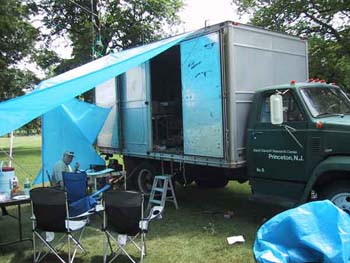
|
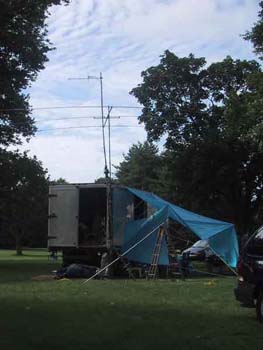
|
|
The view of our club station, based in and around the David
Sarnoff Research Center truck.
|
Side view of the truck, showing antenna setup.
|
|
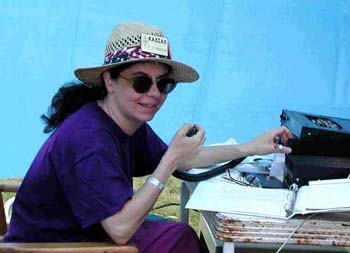
|
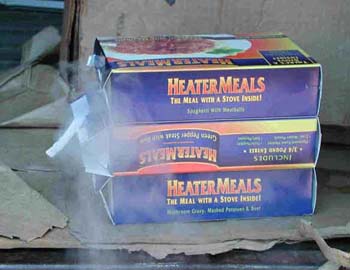
|
|
Me (KA3IAX) operating the 6 meter station.
|
Headache producing nutrition sources supplied by the Princeton Red Cross.
|
|
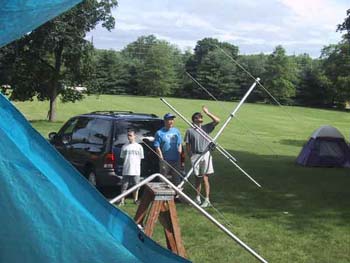
|
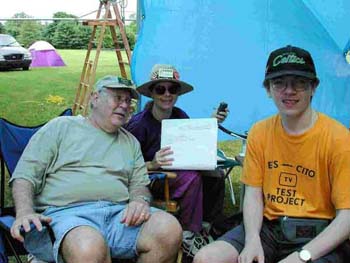
|
|
Small antenna used for satellite contact.
|
Satellite team: Howard (K2PYY), Rebecca (KA3IAX) and Kevin
(KB3BUT) following contact with Space Station.
|
|
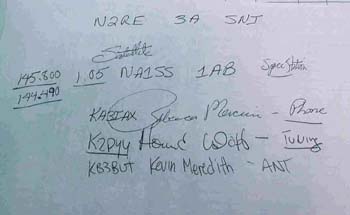
|
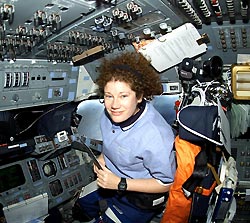
|
|
View of logbook page showing International Space Station
contact.
|
Astronaut Susan Helms, KC7NHZ, making Field Day contacts from
the ISS. [NASA Photo]
|
|
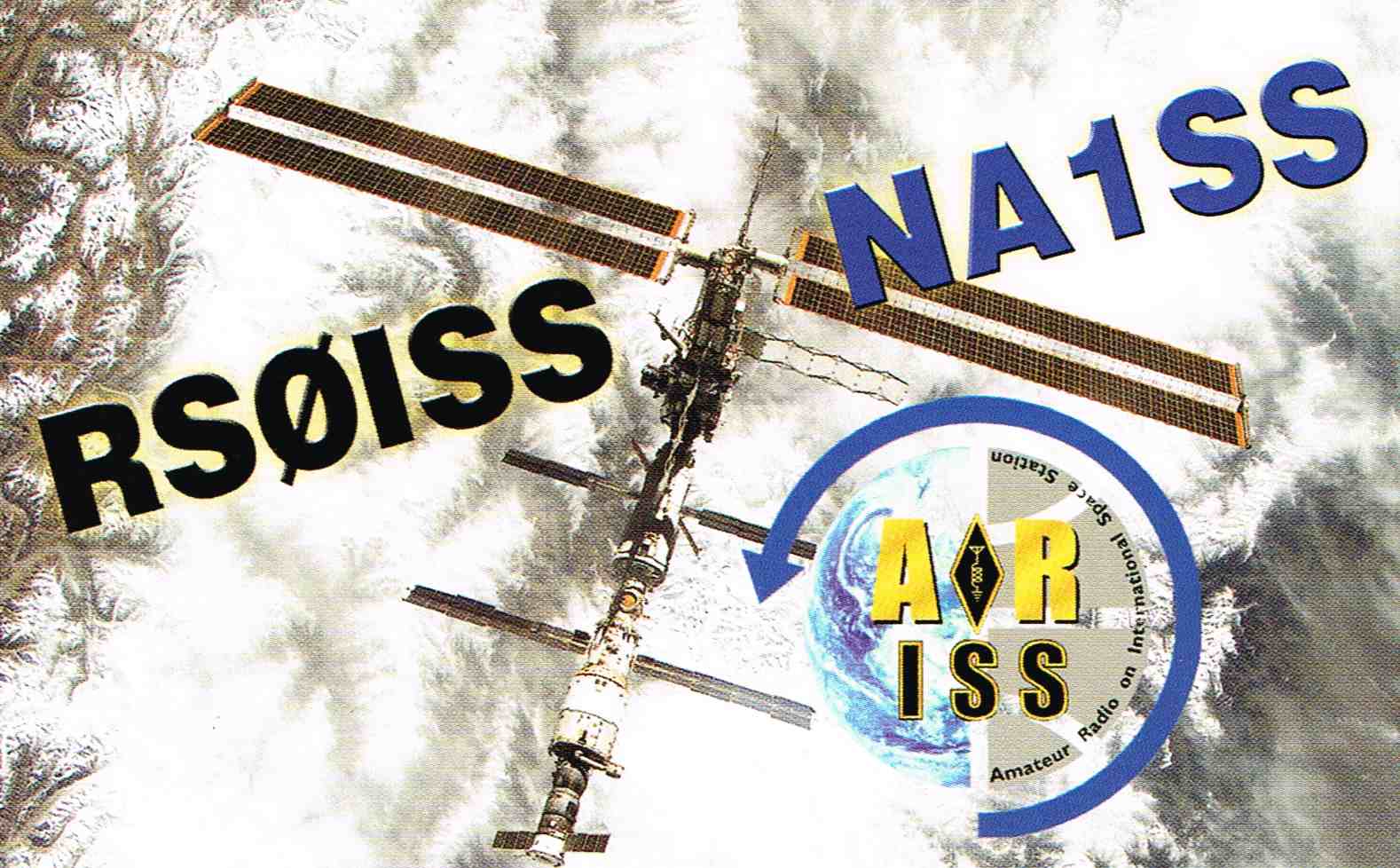
|
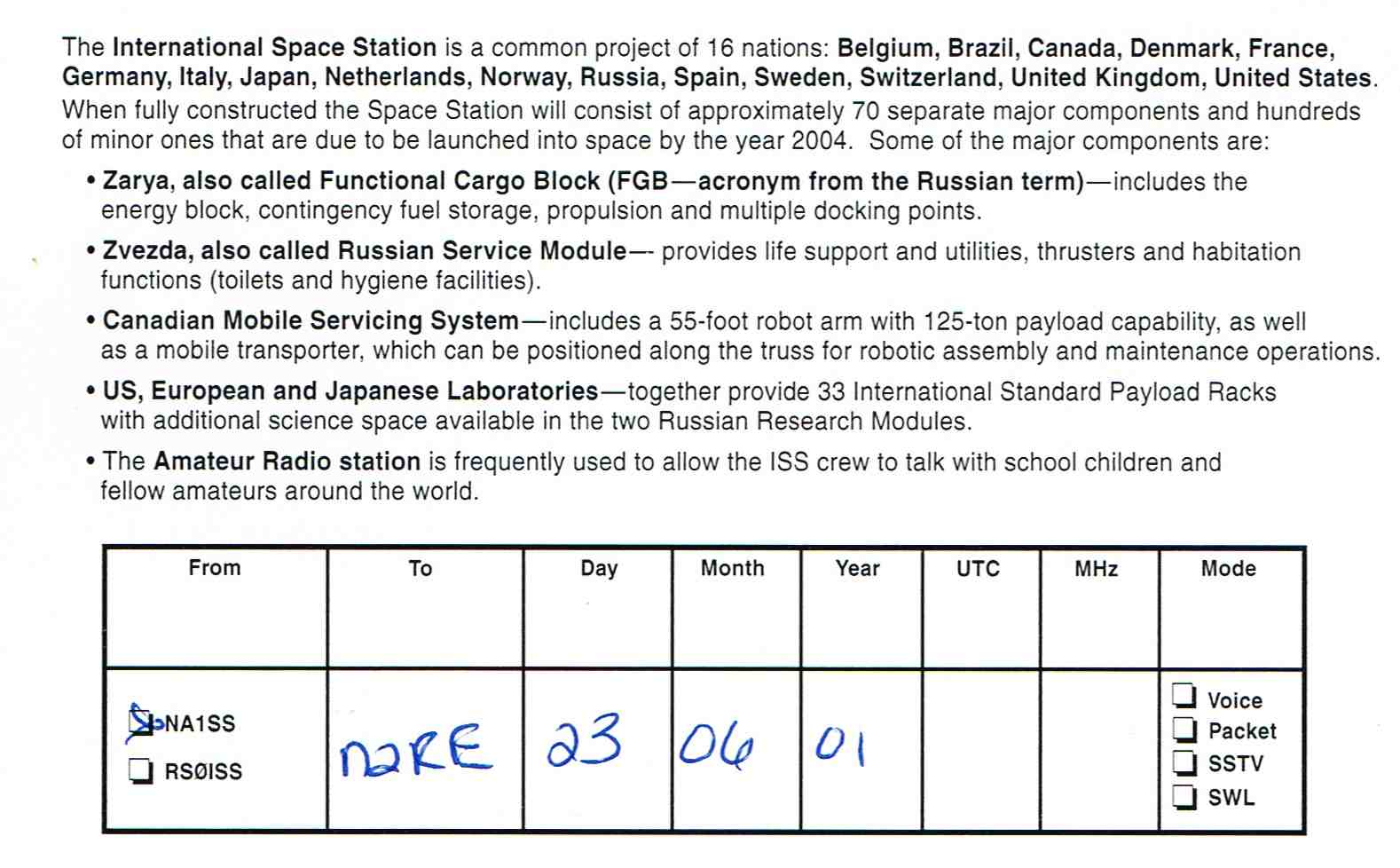
|
|
Front of QSL Card issued by NA1SS.
|
Back of QSL Card issued by NA1SS. Note the date disparity.
|
The Field Day contact with the International
Space Station was probably the most exciting event I've
experienced in my two decades as a Ham! David (N2ZHY) wandered
over to the 2 meter rig a bit before 13:00 (Sunday, June 24) and
mentioned that the ISS would be making a sweep in about 10 minutes.
Howard (K2PYY) sprung into action and amidst much knob-twiddling,
re-tuned the ICOM to the downlink (receive) frequency at 145.800 and
the uplink (transmit) frequency at 144.490. Kevin (KB3BUT)
pointed the antenna -- the direction specified was "straight
up!" Suddenly, the very clear voice of Flight Engineer
Susan Helms (first woman aboard the ISS, and possibly the first Ham
to work Field Day from outer space) was heard making contacts.
She identified herself as Sue NA1SS 1AB (B for battery powered)
aboard the Space Station. The signal was so strong, it seemed
like she was just down the street instead of 250 miles above our
heads. I was handed the mike (under the well known assumption
that a woman's voice, especially mine, could more easily break
through the pile-up of Hams trying to make contact). I called
"N2RE, N2RE" a few times, paused and listened. Then tried
again "N2RE, November Two Radio Echo, November Two Radio Echo"
and listened again. Much to my amazement, I heard Susan say "November
Two Radio Echo" twice! I keyed the mike and tried to give her
our location, but by then she had moved on to another contact
somewhere in the country. It was exhilarating! Teamwork paid off!
ARRL issued a news
story about the event, and we're going to see if we qualify for
the QSL card (hopefully she put us in her log). UPDATE: Yes, we
did receive the QSL card -- see above! We were one of only "several dozen stations" who made contact!
Thanks to Gerry (N2GJ), Howard (K2PYY) and John (NU3E) for the
photos. Also Charlie (N2CTW) for organizing the event and supplying a
lot of the gear, as well as the many other members of the Sarnoff
community who made Field Day 2001 a success!
Rebecca Mercuri
FCC General Class
KA3IAX.









